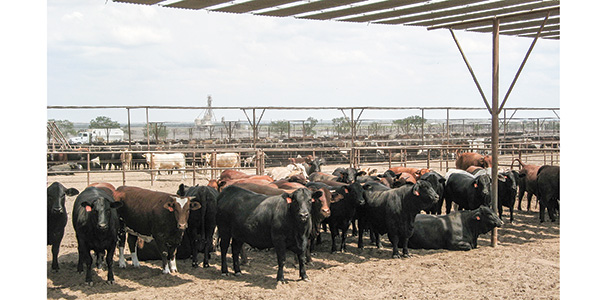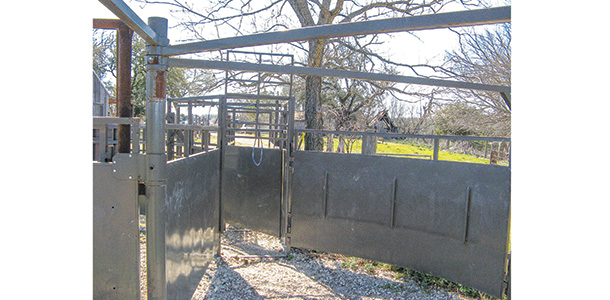The calves are unloaded into a pen with feed they are not used to eating and with water they have trouble finding. In addition, this is the first time they have been separated from their mothers for a long period.
After they are sold, they are commingled with other calves and loaded on a truck and hauled to a preconditioning or stocker operation.
By the second time they are unloaded, they have experienced two or three days of extreme stress and have eaten or drank very little.
They have a good chance of getting sick, and as a result, may die or require the stocker operator to spend a lot of money to save them. With proper handling, diseases incidence in stockers can be reduced significantly.
 “Disease represents a major problem in most feeder and stocker settings,” confirms Dr. Dee Whitttier, DVM, Virginia Polytechnic Institute and State University.
“Disease represents a major problem in most feeder and stocker settings,” confirms Dr. Dee Whitttier, DVM, Virginia Polytechnic Institute and State University.
“In some instances, outbreaks of disease can result in as much as a 30 percent death loss. Treatment costs, reduced feed efficiency and the necessity of culling animals which don’t respond to treatment can result in substantial profit loss.”
Animal losses most often involve the respiratory tract and result from one or more diseases within the bovine respiratory disease complex (BRDC).
This complex is also known as shipping fever and includes diseases such as infectious bovine rhinotracheitis virus (IBR), paraninfluenza 3 (PI3), bovine respiratory syncytial virus (BRSV) and bovine viral diarrhea (BVD).
Digestive disturbances – including diarrheal diseases, grain overload, bloat and parasites – represent a second major area of disease loss.
Whittier says, “Goals for herd health management in a stocker setting should be centered on the following:
- Reduction of death and culling rates
- Improvement of feed efficiency
- Optimization of expenditures for drugs and labor used in treating and preventing disease.”
Reduce stress
“Reduction of stress is an important part of any disease control program,” says John Currin, DVM, Virginia Polytechnic Institute and State University.
“Stress can be caused by anything that abruptly changes the calf’s normal relationship with its environment. A calf goes through tremendous environmental changes when it is weaned and moved from the cow herd to the weaning lot or to a stocker operation. Specific changes take place in the calf’s natural defense mechanisms in response to stress. These changes make it susceptible to infections by bacteria and viruses.”
“If animals have traveled a great distance and arrive late in the afternoon, it is better to let them settle down and relax before processing,” says Jeremy Powell, DVM, University of Arkansas.
“Additional stress at this time will reduce effectiveness of administered animal health products. Place the calves in a dry holding area with adequate space. Provide them with good-quality, palatable hay and clean water. To help the calves find the water trough, let the water run over, providing noise that will attract the animals to the trough.”
“Stress of handling animals in poor working facilities can result in increased sickness and injury as well as dangerous conditions for people working with them,” says Tom Troxel, beef cattle specialist at University of Arkansas.
“Some of the stresses imposed on these animals in our current production systems are unavoidable; nevertheless, reducing stress whenever possible is very important.”
The phrase “less is more” is very appropriate when handling cattle. Cattle are herd animals by nature and don’t like to be alone. Because of this characteristic, they develop less stress when they are handled in small groups.
Cattle do not like to walk into darkened areas and will not move very well around 90-degree corners. The working alley should be designed so each animal can see another animal ahead of it.
“Cattle do not like to move forward when there are distractions,” Troxel continues. “Distractions may include items hanging on the side of the chute, such as clothing blowing in the breeze and chains dangling and clanging. People directly in front of cattle also stop forward movement. It is a good idea to have a working alley with solid sides that do not allow the animal to see over them. The alley should be wide enough for one animal to pass through but not turn around.”
Animals respond well to people who work them quietly. Hot shots may be needed for the occasional stubborn animal but should not be routinely used on every calf.
It isn’t necessary to have a hydraulic restraining chute; however, the chute should provide adequate restraint to prevent injury to the animal or handler.

Proven success
“Low-stress handling is an important practice in our calf preconditioning enterprise,” says Rodney Schmidt, Schmidt Land and Cattle Company at La Grange, Texas. “When we receive a load of calves, we work them quietly through the pens until they can be handled in a low-stress condition.
"At the end of the preconditioning period, it is important that we deliver animals that are calm and not easily stressed. Calm cattle will immediately start eating feed upon arrival at the feedyard, which is important for weight gain and decreased disease potential.”
Dr. Ron Gill, Texas A&M AgriLife Extension Service, has numbers from his family operation that show low-stress handling reduces disease incidence.
Gill reports, “When we adopted low-stress handling in our preconditioning enterprise, our death rates decreased from 2.7 percent to 0.7 percent. Originally, about 0.5 percent of the animals became chronic.
"This was probably due to late detection of disease as a result of the animals masking symptoms from handlers. Improved stockmanship and low-stress handling reduced this number to zero. In addition, we increased average daily gain by 0.29 pounds.”
In addition to the above two testimonies, there are several completed research studies that showed proper management and handling of stockers can help reduce disease. ![]()
Robert Fears is a freelance writer based in Texas.
PHOTOS
PHOTO 1: Cattle are herd animals by nature and don’t like to be alone.
PHOTO 2: Disease represents a major problem in most stocker operations.
PHOTO 3: Crowd pens and work alleys with solid sides can reduce stress on cattle. Photo by Robert Fears.








